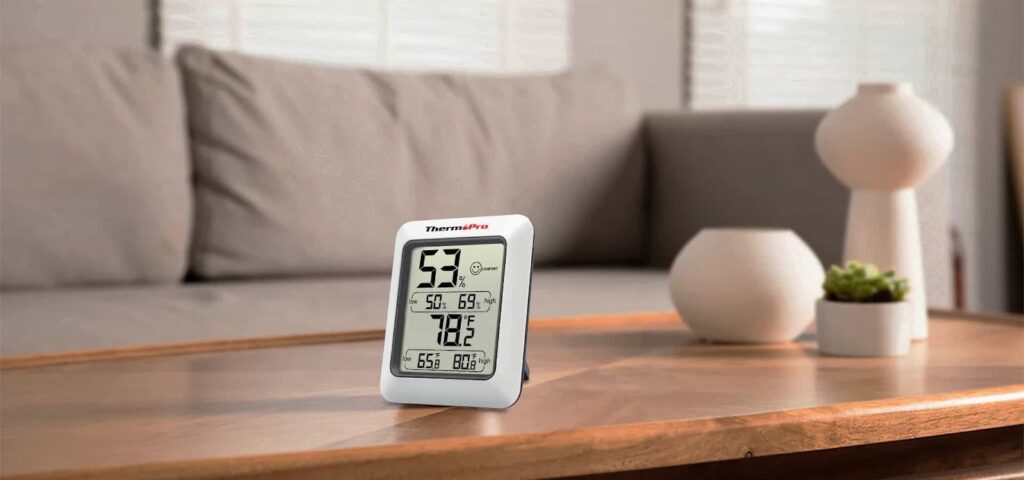As the crisp autumn air settles in and indoor heating systems flicker to life, many of us face the seasonal discomfort of dry, itchy skin and irritating sinus issues. What you might not realize is that both problems often share a common culprit – improper indoor humidity levels. The good news? With simple adjustments to your home environment, you can effectively prevent these discomforts before they begin.
You’ll love these related reads packed with fresh ideas and strategies!
Why Dry Air Causes Skin and Sinus Issues
When indoor humidity drops below 30%, the air becomes extremely dry. This dry air pulls moisture from your skin, leaving it feeling flaky, itchy, or even cracked. Similarly, your nasal passages rely on moisture to filter dust and allergens. When they dry out, your sinuses become more sensitive, increasing your risk of irritation, congestion, and even sinus infections.
The ideal indoor humidity level for comfort and health typically falls between 30% and 50%. Keeping your home within this range can make a noticeable difference in your overall well-being.
7 Practical Ways to Maintain Healthy Humidity Levels
Your First Line of Defense: Know Your Environment
You can’t manage what you don’t measure. This is where an indoor hygrometer becomes an essential tool for any health-conscious household. By providing accurate, real-time information about your home’s humidity levels, this simple device empowers you to take control of your indoor environment before problems arise.
The ThermoPro TP50 Digital Hygrometer Thermometer stands out as an ideal solution for monitoring your home’s conditions. With its high-precision sensors, this device provides immediate feedback on your environment, allowing you to make timely adjustments.
Key Features of the ThermoPro TP50:
- High Accuracy: Measures both temperature and humidity levels with precision (±2-3% RH, ±1°F).
- Clear Display: The large screen shows real-time humidity and temperature, and max/min records, making it easy to monitor at a glance.
- Comfort Indicator: A smiley icon quickly tells you whether your environment is “Comfort,” “Dry,” or “Wet.”
- Portable and Versatile: Compact enough for your bedroom, nursery, living room, office, cellar and more.
- Energy Efficient: Runs on a single AAA battery and lasts for months.

The ThermoPro TP50 Digital Hygrometer Thermometer helps you stay informed about your home’s air quality. Once you know your humidity levels, you can take the right steps, like using a humidifier or adjusting heating, to reach that ideal comfort zone.
Use a Humidifier When the Air Gets Too Dry
Once your hygrometer tells you that the humidity is below 30%, it’s time to add moisture back into the air. A cool-mist humidifier works best during fall and winter because it gently increases humidity without overheating the room.
Here are a few tips for effective humidifier use:
- Clean the water tank regularly to prevent bacteria buildup.
- Use distilled water to minimize mineral dust.
- Place it in rooms where you spend the most time, such as your bedroom or home office.
When paired with a ThermoPro TP50, you can easily fine-tune your humidifier’s output to maintain the perfect humidity balance.
Don’t Overheat Your Home
It’s tempting to turn up the thermostat when it’s cold outside, but hot air is much drier than cool air. Instead of blasting the heat, keep your thermostat between 68°F and 72°F and wear cozy layers instead. This not only keeps humidity levels more stable, but also helps you save on energy bills.
Hydrate and Moisturize from the Inside Out
Even with ideal humidity, your skin and sinuses need internal hydration to stay healthy. Drink plenty of water throughout the day, at least 8 cups, and use a gentle, fragrance-free moisturizer after showering to lock in moisture.
For your sinuses, try using a saline nasal spray or a humidifier near your bed to keep your nasal passages from drying out overnight.
Add Houseplants for Natural Humidity
Houseplants like peace lilies, spider plants, and Boston ferns naturally release moisture into the air through a process called transpiration. Not only do they help maintain humidity, but they also purify the air, making your home fresher and more inviting.
Combine a few potted plants with regular humidity monitoring using the ThermoPro TP50, and your indoor environment will feel more balanced and comfortable.
Check for Hidden Causes of Dry Air
Sometimes, your home’s structure can contribute to dryness. Leaky windows or gaps in doors allow warm, moist air to escape while letting in cold, dry air from outside. Use weatherstripping or draft stoppers to seal these leaks, you’ll notice both improved comfort and lower energy costs.
Why Measuring and Regulating Humidity Matters
Maintaining the right humidity level isn’t just about comfort, but also affects your health, home, and even your electronics.
- For your health: Balanced humidity keeps your skin hydrated, reduces sinus problems, and minimizes static electricity that can irritate sensitive noses.
- For your home: Proper humidity prevents wood furniture and floors from cracking or warping.
- For your comfort: You’ll sleep better and breathe easier in air that feels fresh and natural.
That’s why having a reliable indoor hygrometer like the ThermoPro TP50 is so important. It gives you the data you need to take control of your indoor air and improve your daily life.
Final Thoughts
As the seasons change and indoor air becomes drier, your skin and sinuses don’t have to suffer. By monitoring your home’s humidity with the ThermoPro TP50 Digital Hygrometer Thermometer, using a humidifier wisely, and following simple lifestyle tips, you can create a comfortable, healthy environment that supports your family’s well-being all year long.
So this fall, don’t just turn on the heat, take charge of your indoor air and give your skin and sinuses the care they deserve.
Don’t miss our featured post — the one everyone’s talking about this week!

